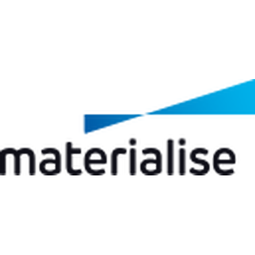下载PDF
Personalized Automation: FITme's Journey to Increase Productivity by 346% with 3D Printing

技术
- 平台即服务 (PaaS) - 设备管理平台
- 可穿戴设备 - 植入物
适用行业
- 建筑物
- 医疗保健和医院
适用功能
- 产品研发
用例
- 大规模定制
- 时间敏感网络
服务
- 培训
挑战
减少人工设计植入物所花费的工作量和时间
传统的植入物会导致弯曲和移动等副作用,这不可避免地会导致患者的不满。
他们在创建定制鼻植入物方面面临的挑战是,设计符合患者鼻部轮廓不规则、可变形状的鼻植入物的“草图”步骤可能是一项艰巨且重复的任务,即使对于熟练的设计工程师也是如此。另一个大障碍是,新工程师需要长达三个月的时间来接受设计患者植入物的充分培训。此外,培训新工程师的成本很高。
客户
适合我的
关于客户
FITme ,一家韩国公司,专门生产面部重建植入物
解决方案
在很短的时间内实现设计
Materialise 的专家分析和研究了 FITme 在 3-matic* 中开发的工作流程,以构建个性化的解决方案 — 一个自定义插件,可自动化工作流程,同时保留关键的手动设计步骤供设计工程师执行。
该插件名为 FITme Nasal Implant Wizard,简化了设计过程。在设计工程师准备好患者的分段部分后,自定义插件将分段部分(中面、软骨、头骨和气道)作为 3D 模型导入 3-Matic,从而将这些部分合并并变形为单个对象。然后插件开始设置草图,根据工程师的地标指示自动创建基础和中心草图平面。草图然后自动对齐到中间面。工程师仍然可以使用交互式平移/旋转功能灵活地调整草图平面。
运营影响
数量效益
相关案例.

Case Study
Energy Saving & Power Monitoring System
Recently a university in Taiwan was experiencing dramatic power usage increases due to its growing number of campus buildings and students. Aiming to analyze their power consumption and increase their power efficiency across 52 buildings, the university wanted to build a power management system utilizing web-based hardware and software. With these goals in mind, they contacted Advantech to help them develop their system and provide them with the means to save energy in the years to come.

Case Study
Hospital Inventory Management
The hospital supply chain team is responsible for ensuring that the right medical supplies are readily available to clinicians when and where needed, and to do so in the most efficient manner possible. However, many of the systems and processes in use at the cancer center for supply chain management were not best suited to support these goals. Barcoding technology, a commonly used method for inventory management of medical supplies, is labor intensive, time consuming, does not provide real-time visibility into inventory levels and can be prone to error. Consequently, the lack of accurate and real-time visibility into inventory levels across multiple supply rooms in multiple hospital facilities creates additional inefficiency in the system causing over-ordering, hoarding, and wasted supplies. Other sources of waste and cost were also identified as candidates for improvement. Existing systems and processes did not provide adequate security for high-cost inventory within the hospital, which was another driver of cost. A lack of visibility into expiration dates for supplies resulted in supplies being wasted due to past expiry dates. Storage of supplies was also a key consideration given the location of the cancer center’s facilities in a dense urban setting, where space is always at a premium. In order to address the challenges outlined above, the hospital sought a solution that would provide real-time inventory information with high levels of accuracy, reduce the level of manual effort required and enable data driven decision making to ensure that the right supplies were readily available to clinicians in the right location at the right time.

Case Study
Intelligent Building Automation System and Energy Saving Solution
One of the most difficult problems facing the world is conserving energy in buildings. However, it is not easy to have a cost-effective solution to reduce energy usage in a building. One solution for saving energy is to implement an intelligent building automation system (BAS) which can be controlled according to its schedule. In Indonesia a large university with a five floor building and 22 classrooms wanted to save the amount of energy being used.

Case Study
Powering Smart Home Automation solutions with IoT for Energy conservation
Many industry leaders that offer Smart Energy Management products & solutions face challenges including:How to build a scalable platform that can automatically scale-up to on-board ‘n’ number of Smart home devicesData security, solution availability, and reliability are the other critical factors to deal withHow to create a robust common IoT platform that handles any kind of smart devicesHow to enable data management capabilities that would help in intelligent decision-making

Case Study
Gas Pipeline Monitoring System for Hospitals
This system integrator focuses on providing centralized gas pipeline monitoring systems for hospitals. The service they provide makes it possible for hospitals to reduce both maintenance and labor costs. Since hospitals may not have an existing network suitable for this type of system, GPRS communication provides an easy and ready-to-use solution for remote, distributed monitoring systems System Requirements - GPRS communication - Seamless connection with SCADA software - Simple, front-end control capability - Expandable I/O channels - Combine AI, DI, and DO channels






